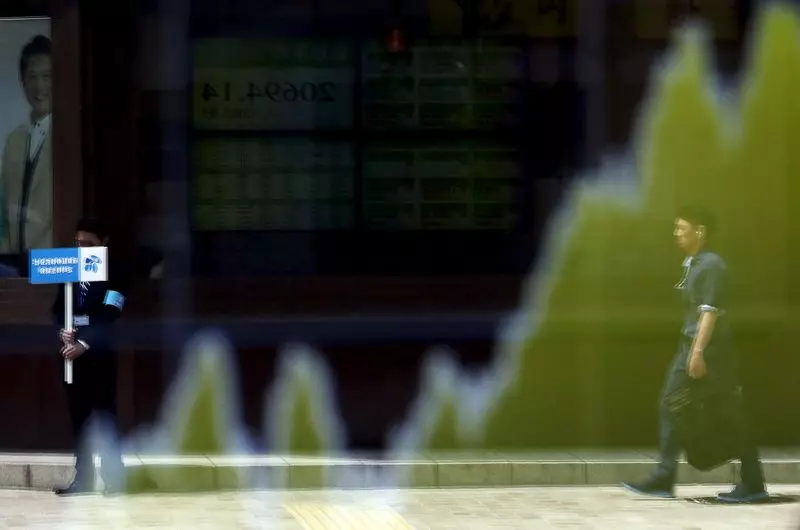On a bustling Thursday, Asian stock markets exhibited a noticeable upswing, reflecting a mix of optimism and caution in the aftermath of the Federal Reserve’s unexpected interest rate reduction. The decision to lower rates by an impressive 50 basis points was a significant move aimed at stimulating economic growth. However, this monetary policy adjustment created a contrasting backdrop, as regional performances were tempered by a lackluster close on Wall Street the previous night.
Japanese equities shone brightly amid this tumultuous landscape, buoyed by a weakening yen ahead of a critical Bank of Japan (BOJ) meeting. The Nikkei 225 and the TOPIX index surged, with increases ranging from 2% to 2.8%. This rally occurred as the yen plunged from a near nine-month peak, largely influenced by a stronger U.S. dollar following the Fed’s announcement. Investors seemed to capitalize on the lower yen value, propelling Japanese stocks higher.
The Federal Reserve’s significant rate cut stirred discussions among investors and analysts alike. While the action was celebrated by many as a decision that could spur growth, it also raised eyebrows about the underlying health of the economy. The Fed’s signaling of a higher outlook for neutral rates suggested that while the immediate goal was to boost economic activity, there could be potential long-term implications that warranted attention.
The sharp cut implies an acknowledgment of existing economic pressures, including inflation risks and a potential slowdown in labor market growth. Jerome Powell, the Fed Chair, addressed this during a press conference, indicating a balancing act between the threats posed by rising inflation and a cooling labor market. The concerns around sustained economic growth are echoed throughout the region, impacting investor sentiment and decision-making across Asian markets.
Specifically looking at the effects across the continent, Australia’s ASX 200 experienced a modest increase of 0.3%. Despite the Fed’s move, strong domestic labor market figures brought about by robust employment growth suggested that the Reserve Bank of Australia would maintain a conservative approach to rate adjustments. This situation presents a complex picture, as local economic indicators could provide a buffer against global monetary shifts.
In contrast, the indices in China showed slight upward movement, with the Shanghai Shenzhen CSI 300 and the Shanghai Composite gaining 0.5% and 0.4%, respectively. These increments continued to build on a recent slight recovery from deeper losses, following a protracted spell at seven-month lows. However, apprehension lingered as market participants awaited decisions from the People’s Bank of China regarding the benchmark loan prime rate, with analysts largely anticipating a hold given the government’s recent conservative stance on economic stimulus.
Meanwhile, South Korea’s KOSPI witnessed a slight decline of 0.5%, a response to market dynamics as it rejoined trading following a three-day hiatus. With India’s Nifty 50 index showing promising futures for a positive opening, there seems to be an undercurrent of cautious optimism regarding the index potentially hitting new peaks.
As investors await the conclusions of the BOJ meeting scheduled for Friday, uncertainty prevails. While some BOJ officials hinted at a potential interest rate hike amidst rising inflation, many analysts remain skeptical about immediate changes due to fear of displacing the ongoing recovery. With Japanese consumer inflation data set to be released concurrently with the BOJ meeting, there may be further insights into whether market expectations will align with actual policy movements.
The Asian stock markets are navigating a complex interplay of local and global economic indicators influenced by the Federal Reserve’s recent policy shift. While significant gains have been noted, mixed signals from regional economies, currency fluctuations, and upcoming monetary policy decisions will play decisive roles in determining the trajectory of these markets in the near term. Market participants are left to ponder the intricate balance between aggressive monetary policy and the realities of economic performance.

